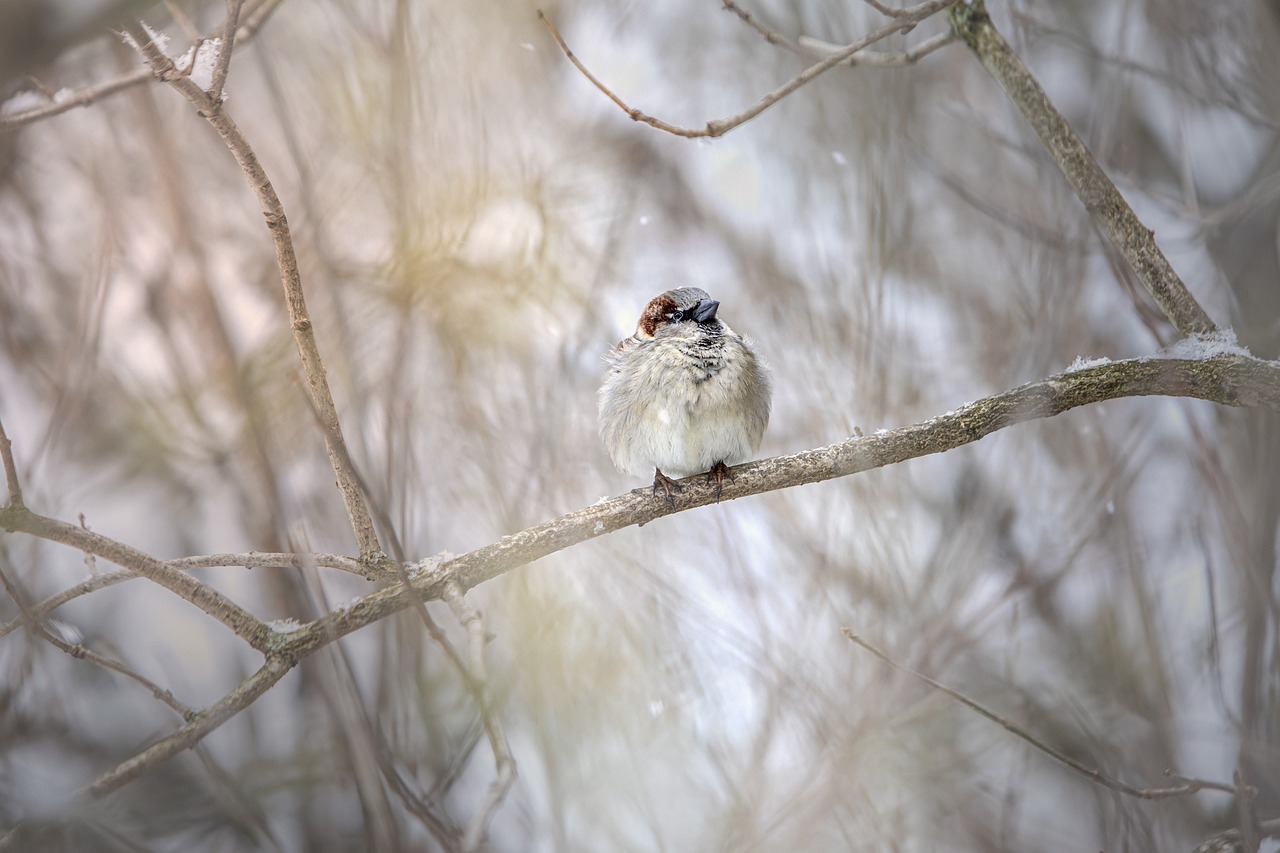The House Sparrow (Passer domesticus) is one of the most widespread and familiar birds in the world, commonly found in urban, suburban, and rural areas. Originally native to Europe, Asia, and North Africa, the house sparrow has been introduced to many other parts of the world, including the Americas, Australia, and parts of Africa, where it has thrived alongside human settlements.
Key Characteristics:
- Appearance:
- Size: Small bird, about 14-16 cm (5.5-6.3 inches) in length, with a wingspan of 21-25 cm (8.3-9.8 inches).
- Color:
- Males: Have a distinctive grey crown, black bib, chestnut-brown nape, and streaked brown back. Their underparts are pale grey, and they have a distinctive black streak on the throat and chest.
- Females: Duller in color, with brown and grey plumage, no black bib, and a pale stripe behind the eye.
- Beak: Stout and conical, adapted for seed-eating.
- Habitat:
- House sparrows are highly adaptable birds that thrive in close proximity to human activity. They are commonly found in towns, cities, gardens, farmlands, and anywhere with buildings or human settlements.
- They build their nests in crevices, roof spaces, walls, and birdhouses, using materials like grass, feathers, and paper.
- Behavior:
- House sparrows are social birds that often live in flocks. They are known for their chirping and chattering calls, which can be heard throughout the day.
- They are opportunistic feeders, primarily eating seeds and grains but also insects, crumbs, and human food scraps. They often forage on the ground and are frequently seen in groups, hopping around parks, streets, and gardens.
- Breeding:
- House sparrows breed multiple times a year, with a typical clutch consisting of 3-5 eggs. Both parents participate in building the nest, incubating the eggs, and feeding the young.
- The young sparrows fledge in about two weeks, and the parents often have multiple broods in a season.
- Conservation Status:
- Despite their abundance in many parts of the world, house sparrow populations have experienced significant declines in some regions, particularly in Europe, due to factors such as habitat loss, changes in building practices, pollution, and a decrease in food availability.
- However, they remain classified as “Least Concern” by the IUCN Red List due to their overall large global population and extensive range.
Ecological Role:
House sparrows play an important role in urban ecosystems as both predators and prey. They help control insect populations by feeding on pests like caterpillars and aphids, especially during the breeding season when they feed their young. They are also prey for various urban predators, including cats, hawks, and owls.
Interesting Facts:
- House sparrows are one of the most widely distributed wild birds globally and are closely associated with human habitation.
- They are known for their aggressive behavior toward other birds, often displacing native species from nesting sites.
- The house sparrow has been celebrated in literature and folklore throughout history, symbolizing traits ranging from simplicity and commonness to resilience and adaptability.
Conclusion:
The house sparrow, with its distinctive chirps and adaptable nature, is a familiar sight in cities and towns worldwide. Though common, this small bird serves as an important reminder of the complex relationships between wildlife and human environments.
Views: 1837
Subscribe to the newsletter:
